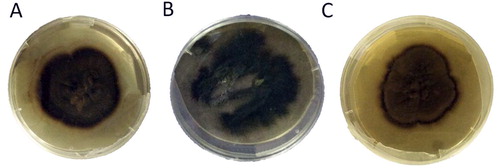Figures & data
Table 1. Pathogenic bacterial strains used in antibacterial activity assay.
Figure 2. H. werneckii in 3-week-old culture. Different shapes of budding conidia and pseudomycelium (A–E).
Note: Bright-field light micrographs (mounted in water). Scale bars: 0.5 µm (A–D), 0.1 µm (E).
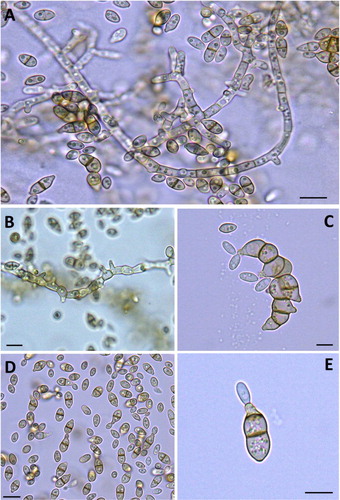
Figure 3. Bayesian phylogenetic tree of Hortaea spp. and related taxa, based on the nucleotide sequences of the large subunit (LSU) rDNA sequence. Numbers are bootstrap support, Maximum parsimony (MP). The H. werneckii isolates are highlighted.
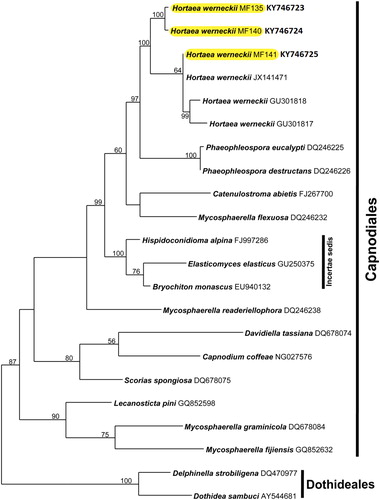
Figure 4. Agar disc diffusion method using MF135 crude extract against MRSA (A), C. jejuni (B) and S. typhimurium (C).

Table 2. Preliminary bioactivity of crude extracts from H. werneckii strains against tested pathogenic bacteria (disc 5 mm).
Table 3. Preliminary bioactivity of H. werneckii extract fractions against tested pathogenic bacteria.
Figure 5. Illustration of two-fold micro-dilution plate to determine the MIC of the selected three active fractions of H. werneckii MF135, MF140 and MF141. Positive control, ciprofloxacin (3 µg/mL); Negative control, acetone.
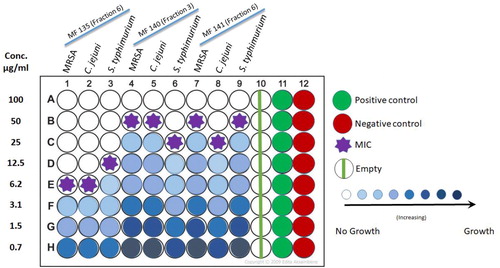
Figure 6. GC-MS chromatogram for active fractions of H. werneckii MF135 (A), MF140 (B) and MF141 (C).
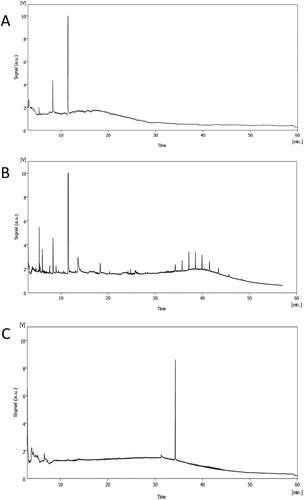
Table 4. GC-MS analysis of active fractions from H. werneckii ethyl acetate.
Data availability
The authors confirm that the data supporting the findings of this study are available within the article.

